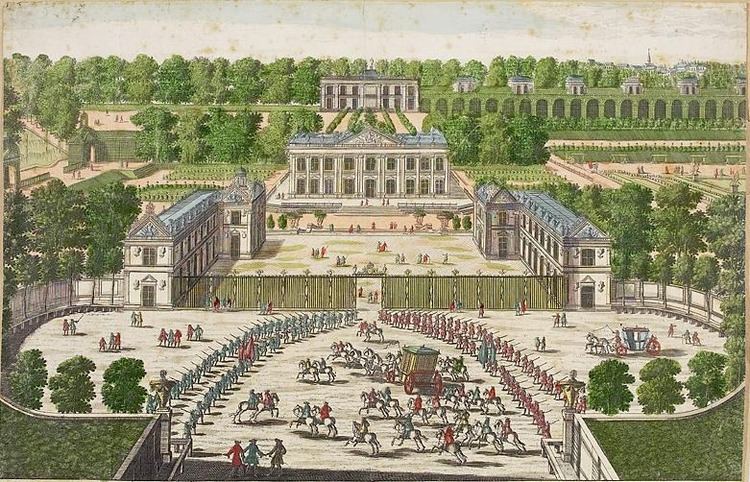 | ||
Similar Machine de Marly, Marly horses, Grand Trianon, Gardens of Versailles, Musée Promenade | ||
Visite virtuelle ch teau de marly versailles
The Château de Marly was a relatively small French royal residence located in what has become Marly-le-Roi, the commune that existed at the edge of the royal park. The town that originally grew up to service the château is now a dormitory community for Paris.
Contents
- Visite virtuelle ch teau de marly versailles
- Ch teau de marly histoire
- History
- Remains
- The Marly machine
- References
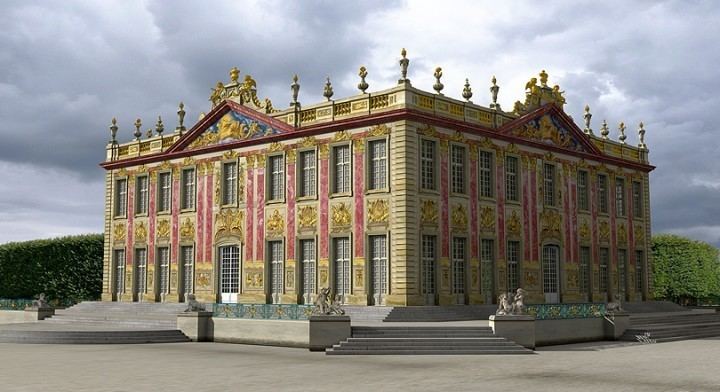
At the Château of Marly, Louis XIV of France escaped from the formal rigors he was constructing at Versailles. Small rooms meant less company, and simplified protocol; courtiers, who fought among themselves for invitations to Marly, were housed in a revolutionary design of twelve pavilions built in matching pairs flanking the central sheets of water, which were fed one from the other by prim formalized cascades (illustration, right).
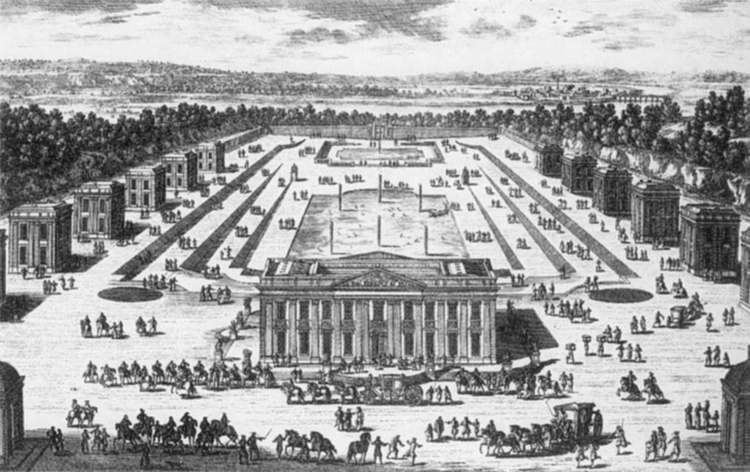
The château is no more, nor the hydraulic "machine" that pumped water for Versailles. Only the foundation of Jules Hardouin-Mansart's small château, the pavillon du Roi remains at the top of the slope in Marly park.
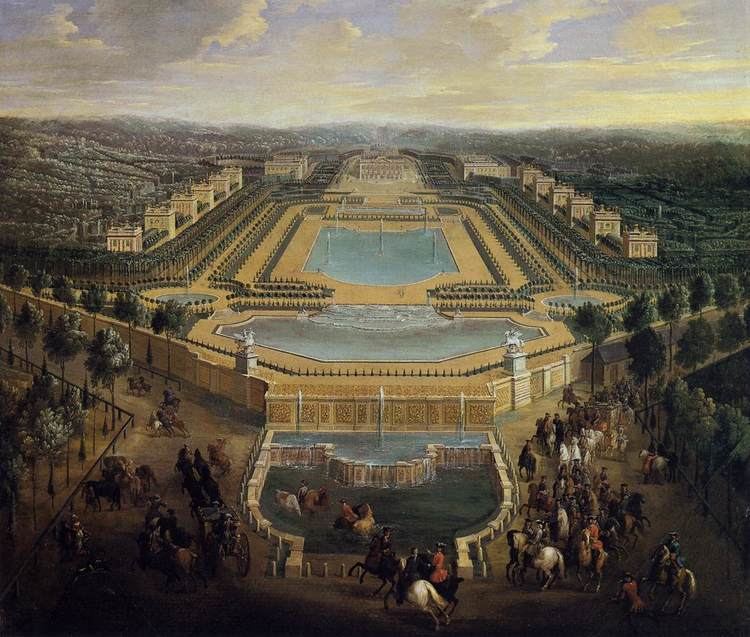
Ch teau de marly histoire
History

The works at Marly were begun in the spring of 1679, on 22 May, before Louis had moved his court permanently to Versailles. The king was looking for a retreat on well-wooded royal lands between Versailles and Saint-Germain-en-Laye that were well-watered and provided a grand view. Marly was chosen.
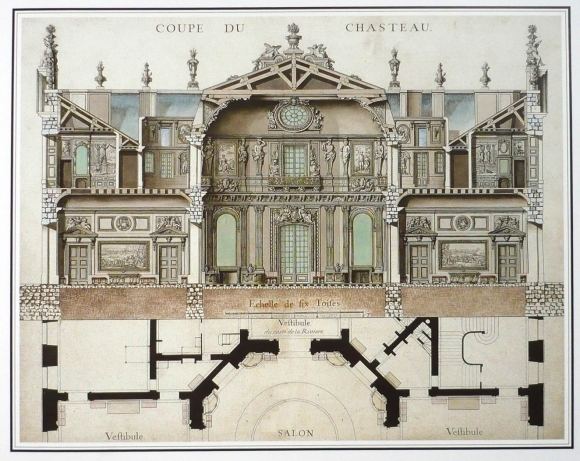
Robert Berger has demonstrated that the design of Marly was a full collaboration between Jules Hardouin-Mansart and the premier peintre Charles Le Brun, who were concurrently working on the Galerie des Glaces at Versailles. Mansart's elevations for the pavilions were to be frescoed to designs adapted from a suite that Le Brun had recently drawn and the frescoed exteriors of the otherwise somewhat severe buildings created a richly Baroque ensemble of feigned sculptures against draperies and hangings, with vases on feigned sculptural therms against the piers— all in the somewhat eclectic Olympian symbolism that Le Brun and the King favoured everywhere at Versailles.
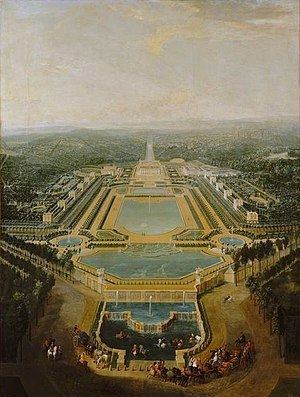
The decor of the pavillon du Roi featured Apollo, the Sun King's iconographic persona, and Thetis. Other pavilions were dedicated to other Olympians, but also to Hercules, and to Victory, Fame and Abundance. Construction was completed by 1684, though the overcharged painted programmes were simplified and restrained in the execution.
The Sun King attended the opening of the completed hydraulic works in June 1684 [1] and by 1686 development was sufficiently advanced for the King to stay there for the first time, with a picked entourage. The theme of Marly was that it was a simple hunting lodge, just enough to accommodate the Royal Hunt. In 1688 the Grand Abreuvoir à chevaux was installed on the terrace, a mere "horse trough."
Throughout the rest of his life, Louis continued to embellish the wooded park, with wide straight rides, in which ladies or the infirm might follow the hunt, at some distance, in a carriage, and with more profligate waterworks than waterless Versailles—watered from Marly in fact—could provide: the Rivière or Grande Cascade dates to 1697–1698.
The famous description of Marly in the memoirs of Louis de Rouvroy, duc de Saint-Simon were written in retrospect and, for the initiation of Marly, at second hand; when Saint-Simon wrote, in 1715, Marly's heyday was ending, with the death of Louis XIV that year. Louis' heirs found the north-facing slope at Marly damp and dreary, and rarely visited.
The "river" was filled in and grassed in 1728. During the Revolution the marble horses by Guillaume Coustou the Elder, the Chevaux de Marly, were transported to Paris (1794), to flank the opening of the Champs-Élysées in the soon-to-be-renamed Place de la Concorde. (They are now in the Musée du Louvre, along with many other Marly sculptures.)
In 1799/1800, Marly was sold to an industrialist, M. Sagniel, who installed machinery to spin cotton thread. When the factory failed in 1806, the château was demolished and its building materials sold, even the lead of its roof. Napoleon bought back the estate the following year; the empty gardens and the surrounding woodland park still belong to the State.
Remains
At the end of the 19th century several connoisseurs purchased leases on the individual garçonnières, cleaned up the overgrowth, recovered some bruised and broken statuary and recreated small gardens among the ruins: Alexandre Dumas, fils and the playwright and collector of 18th-century furnishings Victorien Sardou.
The Cour Marly of the Louvre museum was inaugurated in 1993. It contains mostly works of art from Marly, displayed on three levels.
The Marly machine
Providing a sufficient water supply for the fountains at Versailles had been a problem from the outset. The construction of the Marly hydraulic machine, actually located in Bougival (where its inventor Rennequin Sualem died in 1708), driven by the current of the Seine moving fourteen vast paddlewheels, was a miracle of modern hydraulic engineering, perhaps the largest integrated machine of the 17th century.
It pumped water to a head of 100 meters into reservoirs at Louveciennes (where Madame du Barry had her chateau in the 1760s). The water then flowed either to fill the cascade at Marly or drive the fountains at Versailles — the latter, after passing through an elaborate underground network of reservoirs and aqueducts. The machine could only deliver sufficient pressure to satisfy either Marly or Versailles, and invariably the King's demands received priority.
In the nineteenth century, various other pumps replaced the originals, and the last was taken out of service in 1967.
